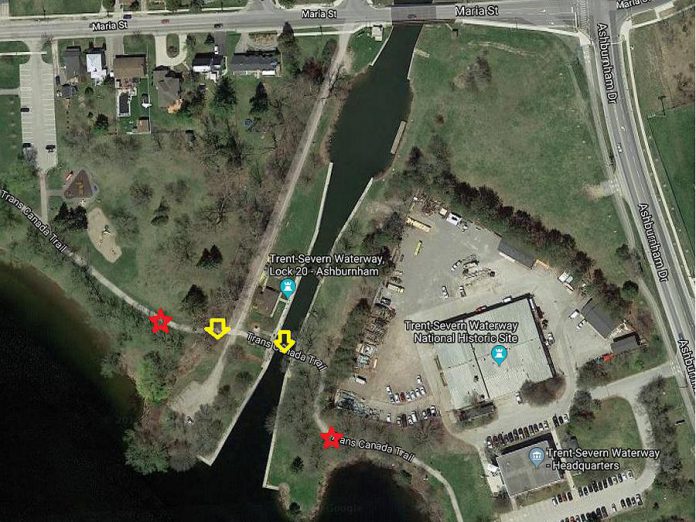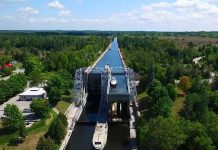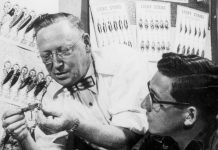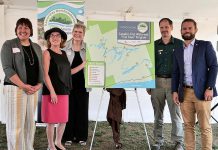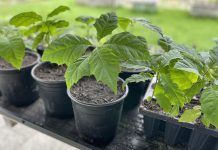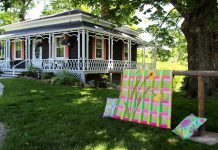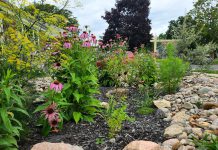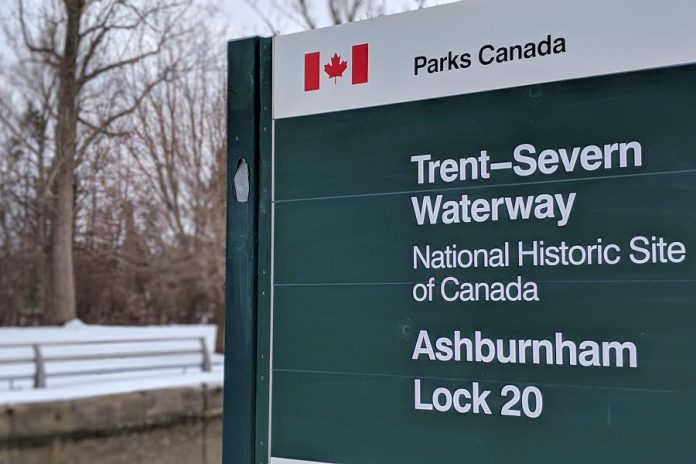
Parks Canada is about to have five longstanding trees cut down alongside the Trent Canal at Lock 20 Ashburnham, beside Rogers Cove in Peterborough’s East City.
The five large Carolina Poplar trees are located along the 180-metre access road that runs from just west of the Maria Street swing bridge south to the pedestrian walkway at Rogers Cove.
The access road is located completely on Parks Canada property, but is often used by vehicles and pedestrians to access the park at Rogers Cove.

A media release from Parks Canada issued on Friday (February 22) states “The removal of a cluster of dead and unsafe Carolina Poplar trees is required to ensure the safety of those that utilize this area.”
Five trees been marked with red spray paint for removal. Two of the trees in located across from each other on the access road, and the remaining three are spread along the entire length of the access road.
kawarthaNOW.com contacted Parks Canada for clarification on whether bore testing was completed to evaluate the health of the five trees.
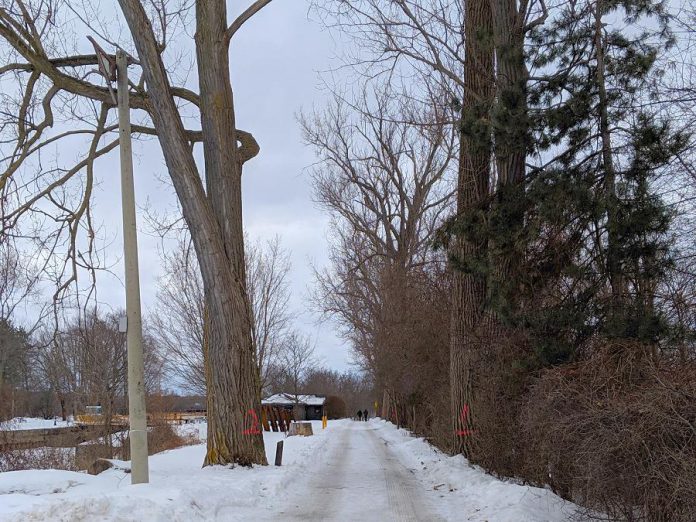

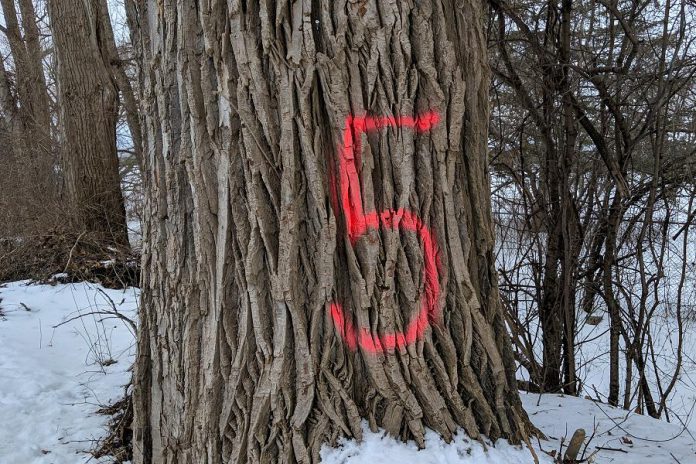
Aarin Crawford, a public relations and communications officer with the Ontario Waterways Unit of Parks Canada, provided a response from Treescape Canada, the Peterborough arborist that Parks Canada has contracted to complete the tree removal work.
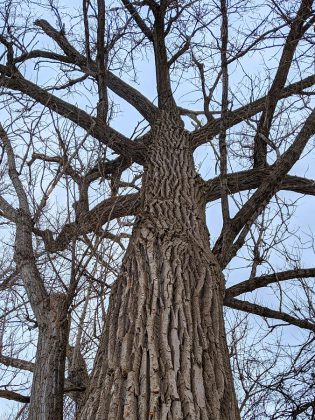
“Bore testing on Carolina Poplars is not an effective method to evaluate stability, as they are usually solid at the base of the tree and the cavities tend to be higher up into the crown where it is difficult to test,” reads the Treescape response.
“From a visual inspection, it was easy to establish that the trees pose a danger to the public both for pedestrians and vehicles, public safety being our number one priority. There was significant evidence of dead wood within the crown that indicates the trees are at the end of their life span.”
Parks Canada says the tree removal will begin on Monday, February 25th with completion by Friday, March 1st.
During this time, the access road will be closed and there will be limited access to the walking path that runs from Rogers Cove in the west, across the bridge at Lock 20, and continues east to the Trent-Severn Waterway headquarters.
Parks Canada says the site will be well marked with warning signs, and flagging people will be in place to help direct the flow of traffic.
